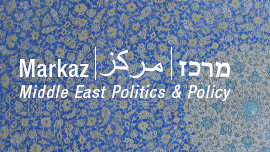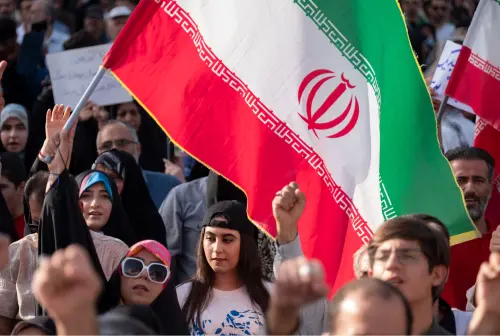Editor’s Note: As part of this year’s U.S.-Islamic World Forum, many of our participants are writing posts on Markaz to share their thoughts on one of the diverse topics discussed at the Forum. We hope you will join us by watching live webcasts from Doha, Qatar, on June 1-3, 2015, or following the conversation on Twitter with #USIslam15.
One year ago at the 11th annual U.S.-Islamic World Forum, the Timbuktu Renaissance launched its project to foster peace, unity, reconciliation, and economic development in Mali through a focus on its heritage and living culture.
As the Forum’s first Action Group, the Timbuktu Renaissance committee, comprised of 45 thought-leaders from around the world, focused on developing strategies and plans that could be implemented both on the ground in Mali and elsewhere to generate interest in and support for this unique approach to post-conflict recovery, integrating culture and economic development, public and private sectors, local and international actors.
Critical to the success of the Timbuktu Renaissance was the support and collaboration of the Malian government, starting with President Ibrahim Boubacar Keita. President Keita, who delivered a keynote at the 2014 Forum, attended every session of the Action Group, accompanied by his ministers of foreign affairs, culture, investment, and religion.
There was a true meeting of the minds between the Timbuktu Renaissance co-directors and the Malian government representatives. N’Diaye Ramatoulaye Diallo— Mali’s minister of culture and President Keita’s appointed representative to the Timbuktu Renaissance— already had prioritized putting culture at the heart of socio-economic development.
Over the course of the Forum, the artists, scholars, diplomats, foundation executives, and technologists that composed the Timbuktu Renaissance Action Group committee mapped out strategies to protect, preserve, and disseminate information about Mali’s heritage, and to revive its living culture— most notably, music that is renowned around the world as the source for blues and rock n’ roll.
Many say culture is Mali’s calling card to the world; therefore, it makes sense to place culture at the very heart of the country’s recovery from the 2012 conflict— when a toxic mix of violent extremists, Tuareg separatists, and other splinter groups converged on the north, subjugating Timbuktu and the surrounding region to their brutal regime. The futile effort to silence music— Mali’s lifeblood— was met with defiance. “They will have to kill us first,” famously declared musician Fatimata Walet Oumar, a member of the Timbuktu Renaissance Action Group. The 2015 Oscar-nominated film Timbuktu recreates a scene familiar during the occupation, a public whipping for the crime of singing.
While French military intervention expelled the extremists and restored Timbuktu’s mayor, Hallé Ousmane Cissé, sporadic violence continues to plague northern Mali. The peace accords signed on May 15, 2015, mark a step in the right direction, but they are not comprehensive, and key separatists still refuse to sign.
As the Malian government continues to work towards a comprehensive peace agreement, the Timbuktu Renaissance will persevere in trying to raise the profile of Mali as a tolerant, pluralistic society, rich in history and contemporary culture, and as an inspiring success story for similarly afflicted communities.
In both its present— with music from Tuareg, Songhay, Fulani, Bambara, Malinke, and Arab communities among others—and its past, with the humanistic and scientific legacy of the Timbuktu manuscripts, contemporary and on a par with the Italian Renaissance— Mali represents an authentic Islamic counter-narrative to intolerance, ethnic tensions, and violent extremism.
In its first year, the Timbuktu Renaissance has spread the word about Mali’s culture-fueled revival through concerts, public events, publications, tech platforms and media. In addition, Timbuktu Renaissance has collaborated with partners in Mali and abroad to launch and develop projects on the ground. Many were envisioned at the Action group meetings at last year’s Forum, while others have been inspired by the Timbuktu Renaissance’s progress. These include:
July 2014: Timbuktu Renaissance co-directors traveled to Mali and Timbuktu with Director of Google Cultural Institute Amit Sood to meet with Malian government officials; artists; NGO, cultural and private sector leaders; Timbuktu government and religious leaders; and U.S. Embassy officials.
August 4, 2014: There was a Timbuktu Renaissance concert by Malian musicians and discussion held by the Brookings Institution at the Africa Summit Reception in Washington, D.C.
September 20, 2014: Timbuktu Renaissance co-directors organized a Timbuktu Renaissance concert and celebration at the new Africa Center to kick off the annual UN General Assembly meetings, featuring over 20 Malian musicians, including the “Golden Voice of Africa” Salif Keita.
October 2014: The Metropolitan Museum of Art’s series, Mali Now!, featured speakers and musicians affiliated with the Timbuktu Renaissance.
October- December 2014: President Keita added a new component to the Timbuktu Renaissance with the vision to develop a new University of Timbuktu, inspired by its predecessor’s position as a beacon of learning throughout the Islamic world.
January 2015: Timbuktu Renaissance co-directors participated in an international conference in Bamako on the manuscripts of Timbuktu.
February 2015: Timbuktu Renaissance co-organized the Peace Caravan series of concerts in Morocco and Malian cities including Ségou, Mopti, and Bamako.
April -June 2015: Molly Raskin, who produced three PBS Newshour segments on the Timbuktu Renaissance and Mali, created a short film on the Timbuktu Renaissance, which was shown this week at the 2015 U.S.-Islamic World Forum.
And next month, we are organizing a continuation of Peace Caravan: Festival in Exile with concerts by Malian musicians in Europe (The Netherlands, Belgium, Frances, Italy, Poland).
Given the continued instability in northern Mali, the Timbuktu Renaissance has not yet achieved its goal of returning the renowned Festival Au Desert, founded by Timbuktu Renaissance co-director Manny Ansar, to Timbuktu. However, the Caravan of Peace brought Malian musicians from all over the country together for series of concerts from southern Mali to Mopti, culminating in a major “Celebration of Peace” concert in Bamako, attended by thousands. At each stop on the tour, musicians from different parts of the country joined together, sometimes showing solidarity by singing in each other’s dialects.
Further, a strong Malian-Moroccan partnership has emerged from the Peace Caravan concerts. Morocco has bolstered its economy through cultural tourism, built largely around music festivals, making it an ideal model for Mali, as it positions culture as a key to post-conflict economic development. More specifically, Timbuktu Renaissance’s Moroccan partners have offered to host a “Festival Au Désert (in Exile)” in the Merzouga desert (a dune setting similar to Timbuktu) in March 2016.
The Timbuktu Renaissance views culture as a jumpstart for development in Mali. The lilting melodies of Mali’s music, the uniquely beautiful forms of Mali’s mud brick architecture, and the scholarship and scientific inquiry in the Timbuktu manuscripts all help preserve Mali’s identity and attract positive interest in the country. But for Mali’s long-term success, the country’s heritage and culture must translate into broad-based economic opportunities. A re-energized economy, driven by a modernized tourism sector, a new world-class university in Timbuktu, sustainable natural resource development, innovative technology and practices to boost food security in the face of climate change can ultimately make Timbuktu a global model.
The Brookings Institution is committed to quality, independence, and impact.
We are supported by a diverse array of funders. In line with our values and policies, each Brookings publication represents the sole views of its author(s).



Commentary
The Timbuktu Renaissance: One year later
June 3, 2015